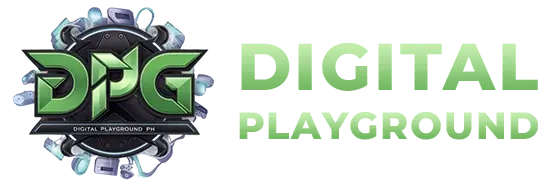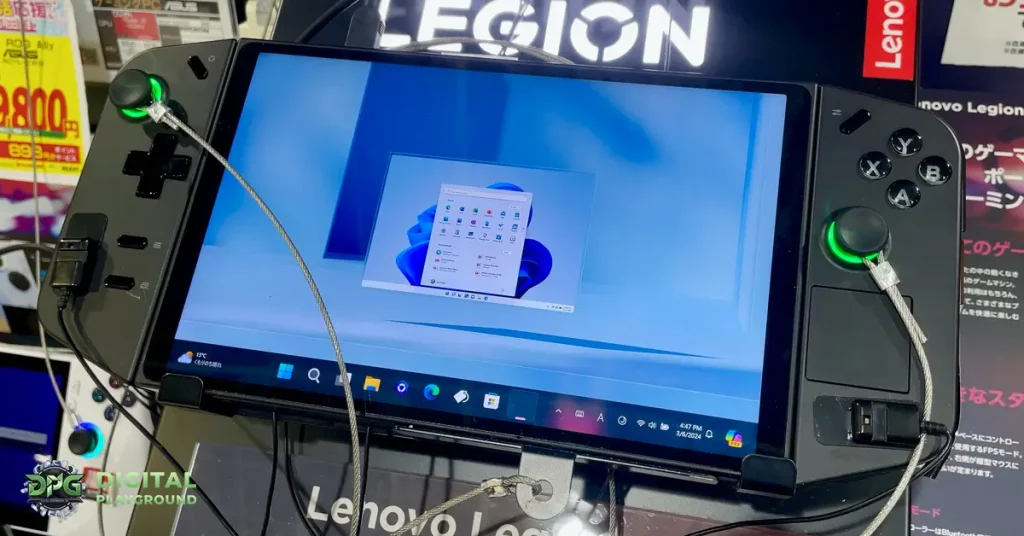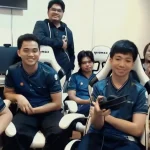It is official! Lenovo has confirmed its plans for a successor to the Legion Go handheld gaming device. With the success from last year’s release, it gained worldwide praises for its innovative features. This has been confirmed by Lenovo’s gaming category manager, Clifford Chong. He said that there are ongoing efforts to develop the next generation Legion Go.
Last year, it was where most of the PC gaming handheld consoles were released. With both ROG Ally and Legion Go being released onto the market as top competitors to the Steam Deck. These devices may seem fresh on the market, but that hasn’t stopped their respective companies from planning for their successors.
Table of Contents
During the Lenovo Innovate 2024 conference in Bangkok, Thailand, attendees were given the opportunity to discuss what is the next plan for Lenovo Legion series and other Lenovo products even though it is primarily focused on the laptop market. The Lenovo Legion Go was discussed and plenty of questions about the potential update.
At the roundtable interview, Clifford Chong answered several questions about the Lenovo Legion Go 2. In a YouTube clip shared by journalist Chris Stead, he stated that the company is “still spending a lot of resources” with its current model, but they are looking to develop the next generation features “when the time comes.” It may seem like a vague comment, but they did confirm that there is a plan to upgrade the current Legion Go.
Following Chong’s announcement, he highlighted Lenovo’s continued investment in enhancing the Legion Go experience. Major details are yet to be discussed but the Lenovo Legion 2 is expected to build upon the strengths of its predecessor while introducing new features to strengthen its current state and entice gamers.
There are a lot of potentials and speculations regarding the Lenovo Legion Go 2. Some speculate that it will be likely to come armed with a next gen AMD Zen 5 APU. For the screen size, Lenovo might stick with the original “chonky” stature since it has been received well.
The first released Legion Go was launched in October 2023. This handheld gaming console boasted an impressive 8.8 inch screen with a high 2.5k resolution, gaming display with up to 144Hz. The Lenovo Legion Go’s biggest advantage is its screen. It has a significantly bigger screen which makes gaming a breeze. It also has detachable Legion TrueStrike controllers. It has two USB-C ports with 40Gbps of USB4 bandwidth. This makes it easy to plug in a keyboard or SSD or even a Thunderbolt 3 external GPU. Meanwhile, the Steam Deck and ROG Ally only have one USB-C socket. These specifications made the Lenovo handheld gaming console stand out and bested other handheld gaming consoles.
Some people may regard this as the best handheld screen due to its astonishing features and specifications while others are leaning towards the Steam Deck OLED when it comes to rich color, deep blacks, HDR, and usability in a dim-light setting. Meanwhile, the ROG Ally offers a smoother, making games often feel faster while the Lenovo Legion Go is technically delivering more frames per second. One distinction is the glossy 8.8-inch, 2560 x 1600, 144Hz, 500-nit, and 97 percent DCI-P3 Gorilla Glass 5-covered screen of the Lenovo. It’s the one that’s big, clear, and quick enough; it can double as a good Windows tablet for reading, web browsing, and streaming video. More crucially, though, players squint less when I play games.
There are some players who notice a thing or two about Lenovo Legion Go’s controller, if you detach that controller and rotate it 90 degrees to the left, those buttons line up with your fingertips and thumb to provide a five-button vertical mouse complete with a 1,800 DPI optical mouse sensor on the Teflon-coated bottom and a small scroll wheel around back. It’s neat, and I was happy to notice Lenovo has some quite decent FPS presets programmed to each button, including the keys you will often use to crouch, jump, and reload. Though you may select 500, 1,200, and 1,800 as well, the mouse defaults to 800 DPI.
Regarding power, the Lenovo Legion Go runs rather faster than the competitors! In general, it was the fastest to charge its 50Wh battery, download games (750Mbps peak download rates over Wi-Fi 6), and in most test bed games — as long as you’re ready to give its AMD Ryzen Z1 Extreme a little gas, that’s it.
Legion Go 720p benchmarks
AC Valhalla
| Power Mode | Steam Deck OLED | Lenovo Legion Go | Asus ROG Ally Z1E |
|---|---|---|---|
| 15-watt TDP | 58 | 48 | 55 |
| 20-watt TDP | N/A | 69 | N/A |
| 25-watt TDP | N/A | N/A | 73 |
| 30-watt TDP | N/A | 76 | 75 |
| On AC power | 58 | 79 | 75 |
Cyberpunk 2077
| Power Mode | Steam Deck OLED | Lenovo Legion Go | Asus ROG Ally Z1E |
|---|---|---|---|
| 15-watt TDP | 50 | 40 | 40 |
| 20-watt TDP | N/A | 57 | N/A |
| 25-watt TDP | N/A | N/A | 61 |
| 30-watt TDP | N/A | 64 | 63 |
| On AC power | 50 | 66 | 63 |
Dirt Rally
| Power Mode | Steam Deck OLED | Lenovo Legion Go | Asus ROG Ally Z1E |
|---|---|---|---|
| 15-watt TDP | 66 | 74 | 71 |
| 20-watt TDP | N/A | 89 | N/A |
| 25-watt TDP | N/A | N/A | 89 |
| 30-watt TDP | N/A | 99 | 95 |
| On AC power | 66 | 100 | 95 |
DX Mankind Divided
| Power Mode | Steam Deck OLED | Lenovo Legion Go | Asus ROG Ally Z1E |
|---|---|---|---|
| 15-watt TDP | 71 | 63 | 57 |
| 20-watt TDP | N/A | 84 | N/A |
| 25-watt TDP | N/A | N/A | 79 |
| 30-watt TDP | N/A | 91 | 81 |
| On AC power | 71 | 91 | 81 |
Returnal
| Power Mode | Steam Deck OLED | Lenovo Legion Go | Asus ROG Ally Z1E |
|---|---|---|---|
| 15-watt TDP | 26 | 31 | 30 |
| 20-watt TDP | N/A | 37 | N/A |
| 25-watt TDP | N/A | N/A | 33 |
| 30-watt TDP | N/A | 40 | 33 |
| On AC power | 26 | 41 | 33 |
Shadow of the Tomb Raider
| Power Mode | Steam Deck OLED | Lenovo Legion Go | Asus ROG Ally Z1E |
|---|---|---|---|
| 15-watt TDP | 60 | 53 | 51 |
| 20-watt TDP | N/A | 72 | N/A |
| 25-watt TDP | N/A | N/A | 69 |
| 30-watt TDP | N/A | 79 | 72 |
| On AC power | 60 | 82 | 72 |
Including a trackpad marks another major victory over the ROG Ally and other handheld gaming consoles. Just a small one, mind, not a whole pair of huge capacitive pads like you get on the Steam Deck, but it’s still plenty to make navigating Windows 11 less painful than it was on the Asus portable. Likewise with the scroll wheel on the rear of the right controller; none of even the Steam Deck OLED possesses one of those.
The specification of the upcoming Lenovo Legion 2 is yet to be announced but industry analysts anticipate a strategic rollout to coincide with the arrival of other devices such as Steam Deck 2 and the next Asus ROG Ally. Lenovo aims to deliver the best handheld gaming experience that surpasses expectations and maintains its competitive edge.
The Lenovo Legion Go 2 is proof that handheld gaming PCs aren’t just a fad, instead it is a new way to enjoy gaming on the go. The decision to pursue a successor reflects Lenovo’s commitment to innovation and making the voices of their consumers heard. What do you think would be the next update for Lenovo Legion Go 2? Will it surpass its predecessor, the Lenovo Legion Go? Stay tuned to keep updated! Digital Playground is here to provide further updates!

Jasmine Cristobal is a passionate gamer and dedicated writer with a love for all things console gaming. With a keen eye for detail and a knack for honest, insightful reviews, Jasmine dives deep into the latest games, hardware, and industry trends to bring readers the most valuable perspectives. Whether breaking down gameplay mechanics, analyzing storytelling, or comparing console performance, Jasmine’s expertise and enthusiasm shine through in every piece. When not glued to a controller, you can find them exploring gaming communities or debating the best RPGs of all time. Follow along for in-depth reviews, tips, and a fresh take on the ever-evolving world of console gaming.



